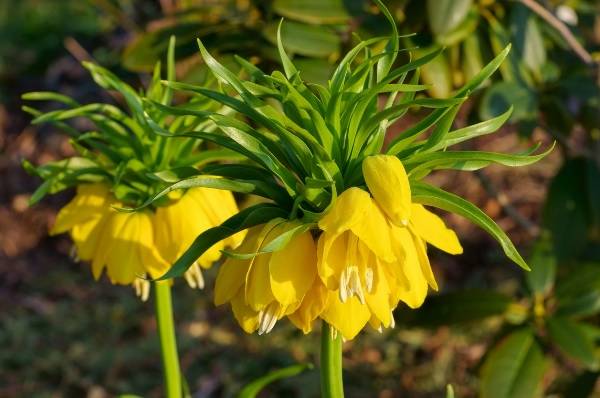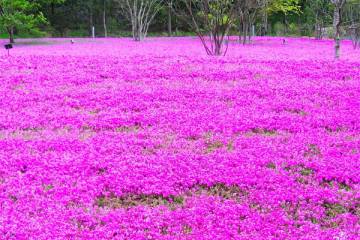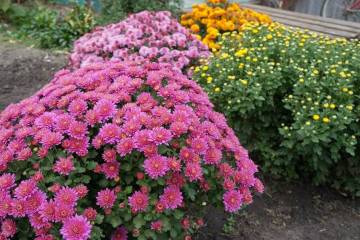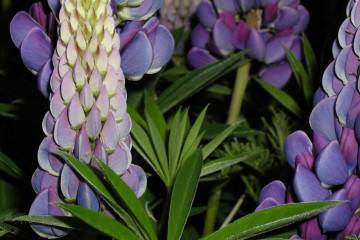When to plant hazel grouses: planting in autumn or spring
Content:
Grouse are perennial bulbous plants. Many gardeners appreciate them for their unpretentiousness, bright flowers resembling clusters of bells, and also because their specific smell scares away shrews, moles and some other pests from the garden. That is why many are interested in how and when to plant hazel grouses, so that they please the eye with flowering and bring practical benefits.
Features of cultivation
Before planting hazel grouses in the ground, you need to decide how they will be used. These flowers look great both as a single plant and in group plantings. They can be grown in ordinary flower beds, or they can be planted on alpine slides. True, in any case, their flowering can be admired only for one month.
There are several popular garden varieties of this plant:
- imperial hazel grouse. Most often, its inflorescences are orange, less often - lemon-yellow shades. It reaches a height of 1 m. This variety blooms in May;
- hazel grouse is less common. It is distinguished by an unusual color of red-brown bells: light and dark spots are staggered on them;
- Russian hazel grouse is distinguished by the unusual shape of the upper leaves, which twist in the form of tendrils. This variety has a tall stem. It blooms early, in March-April. In nature, the species is rare and is listed in the Red Book;
- hazel grouse persian. This plant is found in the wild, and many purple flowers are formed on it. Its cultivars are grown in the gardens, the flowers of which may have a yellow-green color. This is a thermophilic plant, therefore, even in Central Russia, it does not take root very well;
- hazel grouse Mikhailovsky. It is distinguished by a spectacular color of flowers: they have burgundy petals with yellow edges.
Choosing bulbs for planting
Before planting any hazel grouse, you need to purchase its bulbs. Their characteristics will largely depend on the type of plant. For example, in the imperial hazel grouse, the bulbs have a flattened shape. A through hole is clearly visible on it. This is normal, it remains from the previous year's peduncle. Under favorable conditions, buds should form in it in the fall, and new flower stalks will sprout in a year.
There are always dry scales on the surface of the bulb, and dry roots may also remain on it. This is completely normal. Now, if there is bloom or rot on the surface of the bulb, if cracks appear, then such planting material cannot be bought.
When choosing a bulb, you need to pay attention to its size, because this indicator also affects the quality of flowering. For the imperial hazel grouse, the size should be at least 6-7 cm, or better even more, 8-10 cm. Then, next spring, you can admire its flowering. The weight of one bulb can also be large.In high varieties, it can reach 900 g.
Selection and preparation of a site for hazel grouse
Before planting hazel grouses, you need to find the right place for them. Almost all species of this plant grow in nature in the steppes or mountains. Therefore, they do not tolerate stagnant water well, and they cannot be planted near an artificial reservoir.
The top layer of soil for hazel grouse should be loose and fertile. It is recommended to add leaf humus to it, the best option is from hazel.
Landing dates
Thinking about when it is best to plant hazel grouses, you should keep in mind that it is best not to do this in the spring. The problem is that this is a bulbous plant, therefore, in order to have time to set flower buds, hazel grouses require a sufficiently long period of rest, which they reach at low temperatures. Therefore, the fall planting has its advantages. In addition to the fact that the flower will have time to take root even before the onset of freezing temperatures, this will help it to endure the cold.
Preparing the bulbs for planting
It is not so important when to plant hazel grouse flowers, it is important to properly prepare their bulbs. From them you need to carefully remove old scales and dry roots. Then the bulbs must be treated with a fungicide-containing agent. Such protection will help protect the bulb from pests and diseases.
For etching, a drug such as maxim is often used, but phytosporin is no less popular. There is also a simple home method using a potassium permanganate solution, but it is not considered effective enough.
Landing
If the grower is interested in planting hazel grouse in the fall, when and how to plant this plant, then you need to immediately choose a suitable place in the garden (most varieties of this flower prefer sunny areas with fertile soil). In the selected area, you need to prepare the holes in advance. Their optimal size is 40 × 40 cm.
To successfully grow hazel grouses, you need to provide them with drainage. For this purpose, sand should be poured on the bottom of the hole, the thickness of its layer should be 3-5 cm. This will prevent stagnation of water. The hole should be filled with the correct potting mix consisting of garden soil, humus and a small amount of ash.
How to plant hazel grouses in the fall
The bulbs are placed in a dug hole, placed with their bottom on a layer of soil, lightly pressed, sprinkled with sand on top, and only then with a layer of fertile soil. Some growers pre-treat the bulb with mustard powder, but this is not necessary. On top of the planting, they mulch with compost and produce the first abundant watering.
Spring planting flowers
Planting any hazel grouses in the fall is a classic of the genre. But theoretically, this can still be done in the spring, although it will require more effort. It will not be possible to plant in open ground immediately, due to climatic conditions. First, the seedlings are planted in small pots and make improvised greenhouses out of them, covered with plastic wrap. This happens in March, when it is too early to transfer the plants to the garden.Periodically planting will need to be watered, the film in such cases will have to be opened so that the plant "breathes" fresh air. It will be possible to transfer it to the ground only at the end of spring, when warm weather sets in and there will be no frost. Thus, it will be possible to transplant them only at the end of May.
Care after landing
It is not enough to know when to transplant hazel grouses, you also need to provide them with good care. To do this, the plant needs to be watered regularly. True, if the gardener wants to grow it in the open field, and it often rains in spring, the plant will not need additional watering, otherwise it will simply lead to stagnation of moisture.
The first feeding of the plant is carried out when it has buds, that is, immediately before the beginning of flowering. For this, organic fertilizers are used, but not fresh manure, since it can lead to the fact that the roots of the plant will receive a chemical burn.
The second feeding of hazel grouses is carried out after flowering. This is done to improve the condition of the bulb. For this, it is recommended to take phosphorus-potassium fertilizer.
When to transplant hazel grouses after flowering: in autumn or spring
Often, novice florists have a question when to transplant hazel grouse after flowering. Experienced gardeners believe that this should be done in the fall. In this case, you need to dig up the bulbs for the winter, and this is done annually. But in the spring they are still planted in the place chosen last year; there is no need to look for a fundamentally new site.
The hazel grouses only bloom for a month. But, if everything is done correctly, regularly water and feed the plant and prevent water stagnation, this month will be unforgettable for the grower.





















